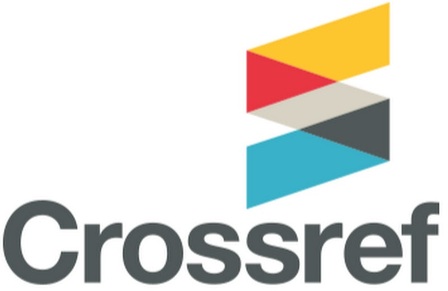The Effect of Good Corporate Governance Towards Idiosyncratic Risk
(1) Faculty of Business and Economics. Universitas Surabaya, Indonesia
(2) Faculty of Business and Economics. Universitas Surabaya, Indonesia
(3) Faculty of Business and Economics. Universitas Surabaya, Indonesia
(*) Corresponding Author
Abstract
This study aims to analyze the effect of good corporate governance towards idiosyncratic risk as a proxy with corporate governance variable as board size, independent director, women, firm size, firm performance, and firm age. The object of this study uses companies listed in the Indonesia Stock Exchange and Philippine Stock Exchange using agency theory. This study uses quantitative approach and multiple linear regression to analyze the data. The target populations of this study are manufacturing companies that listed in Indonesia Stock Exchange and Philippine Stock Exchange in 2014-2018 which are equal to 615 and 200 year observations. The results in Indonesia showed that board size, women, and firm age had negatif effect on idiosyncratic risk. On the other hand, firm size do not show the effect on idiosyncratic risk and firm performance had positive effect on idiosyncratic risk. However, the results in Philippine showed that board size had positive effect on idiosyncratic risk. While, women and firm size do not show the effect on idiosyncratic risk but firm performance and firm age had negatif effect on idiosyncratic risk.
Keywords
Full Text:
PDFReferences
Adams, R. and Funk, P. (2011). Beyond the glass ceiling: does gender matter?. Management Science, Vol. 58 No. 2, pp. 219-235.
Agarwal, R., and M. Gort. (1996). The evolution of markets and entry, exit and survival of firms. Review of Economics and Statistics, 78:489-498.
Agarwal, R., and M. Gort. (2002). Firm product life cycles and firm survival. American Economic Review, 92:184-190.
Asri, I. A. Y., & Suwarta, I. K. (2014). Pengaruh faktor fundamental dan faktor ekonomi makro pada return saham perusahaan consumer good di Bursa Efek Indonesia. E-Jurnal Akuntansi, 353-370.
Becker, John R., Fred R. Kaen, Ahmad Etebari, dan Hans Baumann. (2010). Employees, firm size and profitabilityin U.S. manufacturing industries. Investment Management and Financial Innovations, Vol. 7, Issue 2.
Berggrun, L., Lizarzaburu, E., & Cardona, E. (2016). Idiosyncratic volatility and stock returns: Evidence from the MILA. Research in International Business and Finance, 37, 422-434.
Bowman, E, H. (1982). Risk seeking by troubled firms. Sloan Management Review, 23(4): 33 - 42,
Cannella, A.A. Jr, Park, J.H. and Lee, H.U. (2008). Top management team functional background diversity and firm performance: examining the roles of team member colocation and environmental uncertainty. Academy of Management Journal, Vol. 51, pp. 768-84.
Carney, M. (2005). Corporate governance and competitive advantage in family-controlled firms. Entrepreneurship Theory & Practice, 29(3), 249–265.
Chakraborty, A., Gao, L., & Sheikh, S. (2018). Corporate governance and risk in cross-listed and Canadian only companies. Management Decision.
Chong, Lee-Lee, Hway-Boon Ong, and Siow-Hooi Tan. (2018). Corporate risk-taking and performance in Malaysia: the effect of board composition, political connections and sustainability practices. Corporate Governance: The International Journal of Business in Society, 18(4), 635-654.
Croson, R. and Gneezy, U. (2009). Gender differences in preferences. Journal of Economic
Literature, Vol. 47 No. 2, pp. 448-474.
De Cabo, R.M., Gimeno, R. and Nieto, M.J. (2012). Maria, gender diversity on European banks’ board of directors. Journal of Business Ethics, Vol. 109 No. 2, pp. 145-162.
Dowling, M.M. and Aribi, Z.A. (2012). Female directors and UK company acquisitiveness. International Review of Financial Analysis, Vol. 29 No. 3, pp. 79-86.
Eisenberg, T., Sundgren, S., & Wells, T.W. (1998). Larger board size and decreasing firm value in small firms. Journal of Financial Economics, Vol. 48, pp. 35-54.
Finkelstein, S. and Hambrick, D.C. (1996). Strategic Leadership, West, Minneapolis, MN.
Florackis C., (2008). Agency costs and corporate governance mechanisms: evidence for UK firms. International Journal of Managerial Finance, Vol. 4 No. 1, pp. 37–59.
Ganto, Jullimursyida, et.al. (2008). Pengaruh kinerja keuangan perusahaan manufaktur terhadap return saham di bursa efek Indonesia. Media Riset Akuntansi, Auditing, dan Informasi, Vol. 8, No. 1: 85-96.
Goddard, J., Tavakoli, M. and Wilson, J. O. S. (2009). Sources of variation in firm profitability and growth. Journal of Business Research, Vol. 62, pp. 495-508.
Hambrick, D.C. (1994). Top management groups: a conceptual integration and reconsideration of the team label, in Shaw, B.M. and Cummings, L. (Eds). Research in Organizational Behavior, JAI Press, Greenwich, CT, pp. 171-214.
Jackson, S.E., Brett, J.F., Sessa, V.L., Cooper, D.M., Julin, J.A. and Peyronnin, K. (1991). Some differences make a difference: individual dissimilarity and group heterogeneity as correlates of recruitment, promotions and turnover. Journal of Applied Psychology, Vol. 76, pp. 675-89.
Jianakoplos, N.A. and Bernasek, A. (1998). Are women more risk averse?. Economic Inquiry, Vol. 36 No. 4, pp. 620-630.
Jensen, M, C and Meckling, W, H. (1976). Theory of the firm: managerial behavior, agency costs and ownership structure. Journal of Financial Economics, Vol. 3, No. 4, pp. 305-360.
Kılıç, M. Dan C. Kuzey., (2016). The effect of board gender diversity on firm performance: evidence from Turkey. Gender in Management: An International Journal, 31(7), 434 – 455.
Koerniadi, Hardjo, Chandrasekhar Krishnamurti, and Alireza Tourani-Rad. (2014). Corporate governance and risk-taking in New Zealand. Australian Journal of Management, 39(2), 227-245.
Lee, M., Park, S., Lee, K., Lim, J., Kim, D., Kim, T., Shin, H., Lee, H. and Lee, J. (2012). Economic prospect for the second half year of 2012, Series of Economic Prospect. Korea Institute of Finance, 2012 (2), pp.1-129.
Linck, J.S., Netter, J.M. and Yang, T. (2008), The determinants of board structure. Journal of Financial Economics, Vol. 87 No. 2, pp. 308-328.
Loderer, Claudio dan Urs Waelchli. (2009). Firm age and performance. Journal of Economic Literature, G30, L20.
Mathew, S., Ibrahim, S., & Archbold, S. (2016). Boards attributes that increase firm risk–evidence from the UK. Corporate Governance, 16(2), 233-258.
Murhadi, W. R. (2013). Pengaruh idiosyncratic risk dan likuiditas saham terhadap return saham. Jurnal Manajemen dan Kewirausahaan, 15(1), 33-40.
Pa´stor, L. and P. Veronesi. (2003). Stock valuation and learning about profitability. Journal of Finance, 58: 1749–89.
Pegels, C.C., Song, Y.I. and Yang, B. (2000a). Management heterogeneity, competitive interaction groups, and firm performance. Strategic Management Journal, Vol. 21, pp. 911-23.
Pegels, C.C., Song, Y.I. and Yang, B. (2000b). The impact of managerial characteristics on strategic assets management capabilities. Team Performance Management, Vol. 12 Nos 7/8, pp. 97-106.
Pervan, M., & Višić, J. (2012). Influence of firm size on its business success. Croatian Operational Research Review, 3(1), 213-223.
Schulze, W. S., Lubatkin, M. H., & Dino, R. N. (2002). Altruism, agency and the competitiveness of family firms. Managerial and Decision Economics, 23, 247– 259.
Schulze, W. S., Lubatkin, M. H., & Dino, R. N. (2003). Toward a theory of agency and altruism in family firms. Journal of Business Venturing, 18, 473–490.
Siddiqui, M. F., Razzaq, N., Malik, F., & Gul S. (2013). Internal Corporate Governance Mechanisms and Agency Cost: Evidence from Large KSE Listed Firms. European Journal of Business and Management, Vol. 5 No. 23, pp. 103–109.
Singh, M., dan Davidson, W. N. (2003). Agency Costs, Ownership Structure and Corporate Governance Mechanism. Journal of Banking and Finance, Vol. 27: 793-816.
Smith, K.G., Smith, K.A., Olian, J.D., Sims, H.P. Jr, O’Bannon, D.P. and Scully, J.A. (1994). Top management team demography and process: the role of social integration and communication. Administrative Science Quarterly, Vol. 39, pp. 412-38.
Smith, N., Smith, V., & Verner, M. (2006). Do women in top management affect firm performance? A panel study of 2,500 Danish firms. International Journal of productivity and Performance management, 55(7), 569-593.
Tanikawa, T., Kim, S., & Jung, Y. (2017). Top management team diversity and firm performance: exploring a function of age. Team Performance Management: An International Journal, 23(3/4), 156-170.
Truong, Th. T., & Heaney, R. (2013). The determinants of equity agency conflicts between managers and shareholders: Evidence from Australia. Journal of Multinational Financial Management, Vol. 23, pp. 314–326.
Ujiyantho, M. A., & Pramuka, B. A. (2007). Mekanisme corporate governance, manajemen laba dan kinerja keuangan. Simposium Nasional Akuntansi X, 10(6), 1-26.
Ulupui, I. G. (2007). Analisis pengaruh rasio likuiditas, leverage, aktivitas, dan profitabilitas terhadap return saham (studi pada perusahaan makanan dan minuman dengan kategori industri barang konsumsi di BEJ). Jurnal Ilmiah Akuntansi dan Bisnis.
Yermack, D. (1996). Higher market valuation of companies with a small board of directors. Journal of Financial Economics, Vol. 40 No. 2, pp. 185–211.
Zhang, Cheng, Kee Cheok Cheong, and Rajah Rasiah. (2018). Board independence, state ownership and stock return volatility during Chinese state enterprise reform. Corporate Governance: The International Journal of Business in Society, 18(2), 220-232.
DOI: https://doi.org/10.24123/jmb.v19i2.440
Article Metrics
Abstract view : 590 timesPDF - 153 times
Refbacks
- There are currently no refbacks.
Copyright (c) 2020 Cintya Yuliana Limantara, Werner R. Murhadi, Liliana Inggrit Wijaya

This work is licensed under a Creative Commons Attribution 4.0 International License.
This work is licensed under a Creative Commons Attribution 4.0 International License. ISSN: 1412-3789. e-ISSN: 2477-1783.
 |  |  |  |
 |  |  |  |



